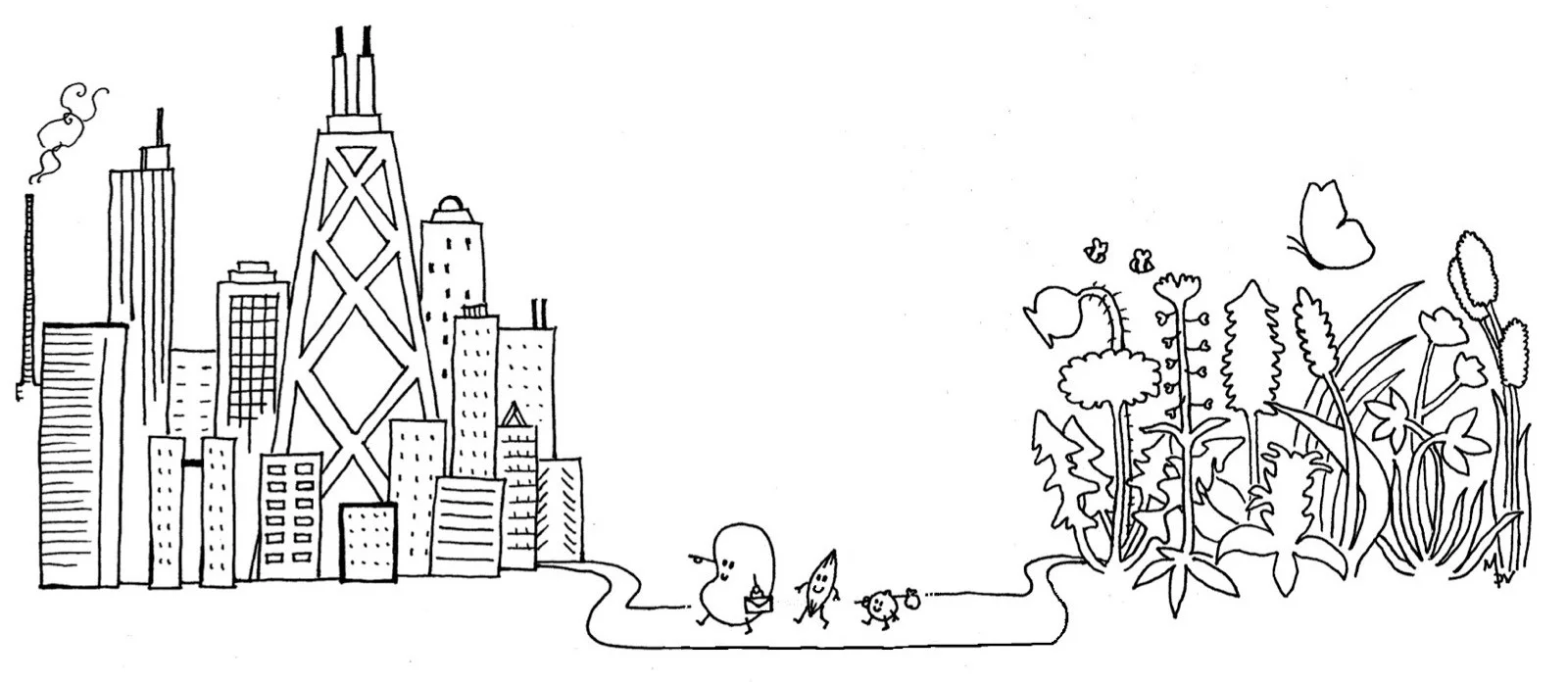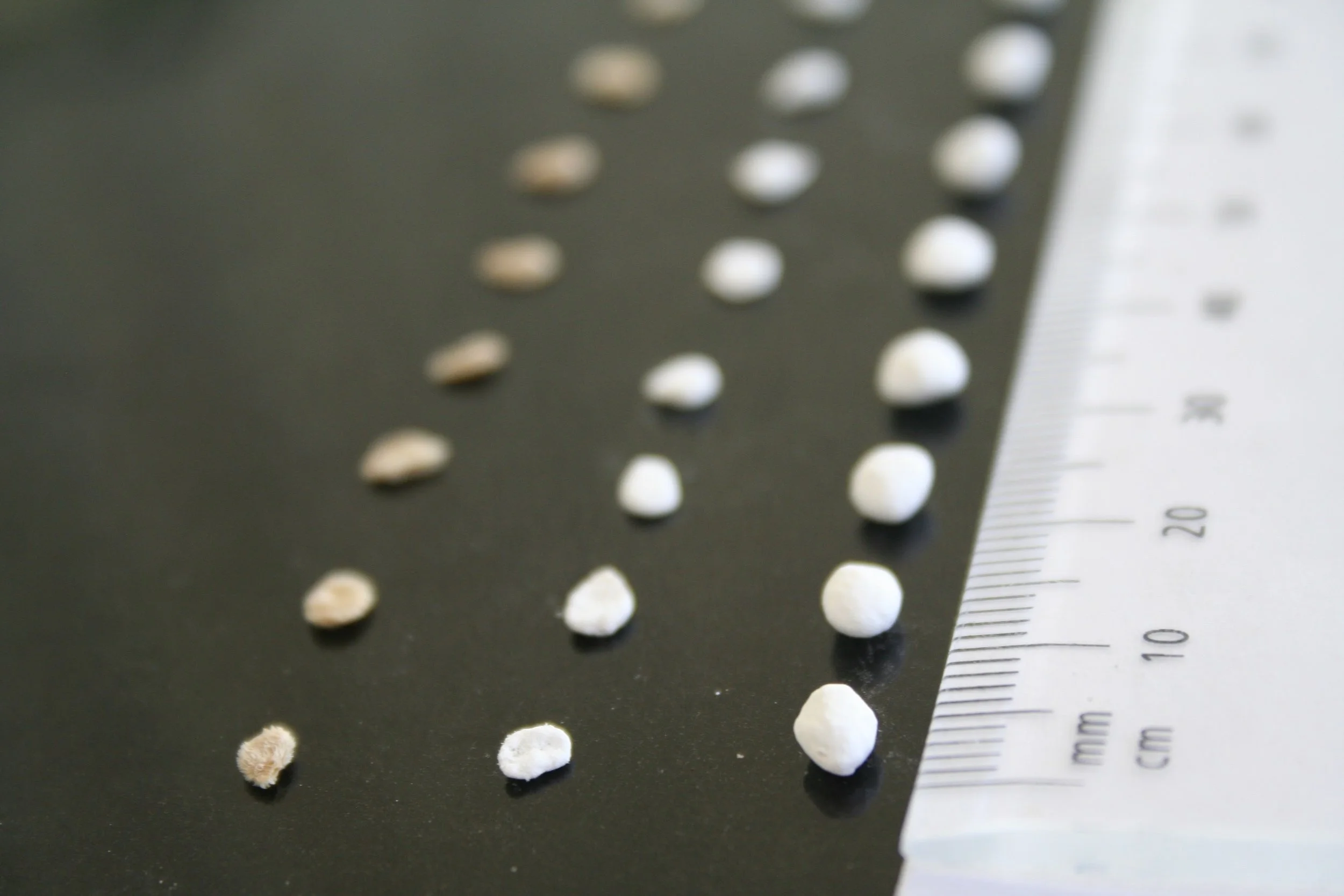Founded over 25 years ago in Córdoba, Spain, the native seed company Semillas Silvestres S. L. is a pioneer and leader in bringing the diversity of the Iberia flora to market and increasing the use of native plants in ecological restoration. Today our seed list is an essential resource for the drafting of any project related to Iberian diversity, whether environmental restoration, recovery of biodiversity in agro ecosystems, or for new projects for sustainable landscaping, so necessary actually in the cities.
Seed Banking in New York City and Beyond
On October 25th, 2012, Heather Liljengren, Seed Bank Coordinator for the Greenbelt Native Plant Center, found herself on Rockaway Beach, New York, making a seed collection when she came across one of the few remaining natural populations of Ammophila breviligulata (American Beachgrass) on the Rockaway Peninsula.
US Forest Service, Bend Seed Extractory
The Bend Seed Extractory (BSE), a facility of the US Forest Service, Pacific Northwest Region located in Bend, Oregon is dedicated to seed and only seed. The facility provides a variety of services to public agencies across the United States. We extract, process, test, package, and store seed for more than 3,000 different species and our seed lots vary from a few tablespoons to thousands of pounds.
A Collaborative Approach to Addressing Seed Challenges in Lebanon
For the past few decades, Lebanon has been facing an ongoing, and rapid, decrease in its natural spaces, with only 13% of forest cover remaining. Several factors contribute to this rapid loss, including urbanization, grazing, climate change and unmanaged natural resources. One of the major challenges facing effective landscape restoration is the proper use of native genetic resources successfully and sustainably.
Taking a Holistic Approach to Ecosystem Restoration Using Native Seeds
Many scientists and social scientists are becoming more and more familiar with using a holistic approach, such as integrating and understanding the ecological, economic and social values of applied research. There are two primary factor that can greatly help or hinder restoration: policy and society.
The Irati Proyectos
Since 2012, the Irati Proyectos company, based in Spain, promote the use of wild flowers for meadow creation in landscape architecture projects. In particular, native seed mixes of herbaceous flowers are used in peri-urban parks, to promote the characteristic biodiversity of the Mediterranean landscape. These experiences are also becoming useful models for many other projects dealing with urban landscape architecture.
Dumbarton Oaks Park
In 2014 the Conservancy began working with NPS, and volunteers to restore the Park’s five meadows. Volunteer labor was used to clear invasive plants and sow a mixture of native warm-season grasses. Native seed collected from the Park was used to supplement a seed mix designed by well-known meadow expert Larry Weaner.
The Greenbelt Native Plant Center of the New York City Parks and Recreation Department
Seed and the City
When we think about seed-based restoration, we usually refer to rehabilitation of large degraded patches of land to bring them back to the original natural or semi-natural state.
Rarely do we think about restoration activities integrated into the urban environment, with its patchwork of remnant ecosystems, designed parkland and utilitarian green infrastructure. The benefits of green urban areas are many, ranging from combating the urban heat island phenomenon to providing shelter for humans and wildlife. The choice of using native plants in these ecosystems may result in lower maintenance costs and help prevent a further spread of alien plants to surrounding rural and natural areas.
Global Seed Conservation Challenge Awards
The BGCI - Botanic Gardens Conservation International launched the Global Seed Conservation Challenge Awards. With over 180 member gardens, the GSCC works to both support and challenge botanic gardens to work outside their garden walls to collect, bank and conserve seeds of threatened species towards Target 8 of the Global Strategy for Plant Conservation. As part of the GSCC, BGCI will be awarding prizes for seed conservation at the 6th Global Botanic Garden Congress (6GBGC).
National Native Seed Conference 2017
The National Native Seed Conference 2017 was held in Washington, D.C. from the 13th to the 16th of February, organized by the Institute for Applied Ecology. This biennial event brought together 350 participants from a wide array of stakeholder groups, restoration practitioners, researchers, native seed growers, land managers, and policy makers. Previously held in the western United States, the choice to hold the 2017 meeting in Washington, D.C. allowed for a new suite of individuals and organizations to be represented. Furthermore, being in the nation’s capital allowed scientists and practitioners to interact with congressmen, senators, lobbyists, and various components of the political system that they are typically far separated from. In a climate of diminishing environmental protection funding there was a strong emphasis on advocacy, especially for the Botanical Science bill, HR 1054. The conference was organized around the National Seed Strategy, and featured inspiring plenaries, oral presentations, panel discussions, roundtables, a lively poster session, and exhibits from the seed producers, seed testing agencies and professional societies.
Can Seed Coating Boost Seed-based Restoration Outcome?
Seed coating is the practice of covering seeds with external materials to improve handling, protection, and, to a lesser extent, germination enhancement and plant establishment. With an annual value exceeding US$1 billion dollars, this technology is mostly the preserve of the private research sector, with few links to the scientific community. Here, we analyse the science and industry of seed coating and its contribution to seed establishment and plant performance. We posit that a closer collaboration between academia and industry is critical to realising the potential of seed coating both as a tool for enhancing plant establishment in the face of the challenges posed to agricultural systems and to propel the multibillion-dollar global push for ecological restoration of degraded ecosystems.
Restoring the Dry Forest Ecosystem of Bonaire
Bonaire’s dry forest ecosystem has struggled in the last 500 years following aggressive deforestation by early European settlers and the introduction of invasive herbivores, including goats and donkeys. The Echo Foundation was established in 2010 with the goal of safeguarding the future of the native Yellow-shouldered Amazon Parrot (IUCN status: vulnerable). Currently, Echo is implementing a reforestation project that involves fencing to exclude the invasive herbivores and growing more than 30 species of native trees to plant in these areas, allowing the abundance and diversity of native plants to increase immediately. These herbivore exclusion zones will also provide recreational areas to encourage visitors and residents of the island to appreciate the benefits of habitat restoration. This project was mandated and funded by the local island government, openbaar licham Bonaire.
Chicago Botanic Garden Fosters Hands-on Research and Learning Opportunities in Plant Restoration
Botanic gardens are often thought of as places that showcase the beauty and diversity of plant life, but more seldom as institutions that can provide critical research and learning opportunities in places where exposure to these may be limited. However, botanic gardens are uniquely positioned to contribute to global restoration and conservation efforts through their botanical expertise and technical infrastructure.
The Chicago Botanic Garden has established a number of collaborative partnerships with regional educational institutions and national programs (like the Research Experience for Undergraduates funded by the National Science Foundation) and leads a prominent summer internship program that exposes students from underrepresented groups to plant biology and conservation through research. By fostering close interaction between the interns and their post-graduate student mentors, the participants not only learn about the research process from hypothesis formulation through experimental design, data collection, analysis, and presentation of their findings but also become intimately engaged in plant conservation and restoration ecology.
NASSTEC, The European Project that Promotes the Science and Use of Native Seed for Ecological Restoration
The NASSTEC (NAtive Seed Science, TEchnology and Conservation) is a European based project that involves academic and industrial partners. Its goal is to develop and share the science and the practice of native seed conservation, production and use in order to improve the availability of native seed and enhance the efficacy of seed based restoration.
In fact, without immediate enhancement of the capability in this specific area of biodiversity science, the native seed industry in Europe will fail to develop and to meet the demand of native seed for large-scale restoration activities.
Summary of an Excellent Conference: SEED ECOLOGY V
In August 2016, Seed Ecology V was held in Caeté, Brazil. The International Society for Seed Science is the organization behind this conference, which is held every 3 years. Locally, the meeting was organized and hosted by the Botany Department of the Federal University of Minas Gerais, led by Chair Fernando A. O. Silveira and Vice Chair Queila Garcia.
It was an all-around excellent conference experience.
There were about 100 participants, a nice size for a conference because you don’t have to miss any presentations and you can meet, talk and interact with most anyone and everyone. Plus the location at the Tauá resort was extremely convenient and comfortable offering further opportunities for discussion and conversation during the delicious meals of famous Minas food.
Twenty-seven Years of Source-identified Seed Development, Production, and Prairie Restoration in Iowa’s Roadsides and Agricultural Lands
The state of Iowa, in the Midwest of the United States, is situated on some of the richest agricultural soils in the world. Seventy-five percent of its 36 million acres (14.6 million hectares) of land have been converted to row crops, predominantly corn and soybeans. It was once the heart of the tallgrass prairie biome, a globally endangered ecosystem. An estimated 0.01% of original prairie still exists in Iowa, and that figure is not much greater for the entire biome.
Untangling Germination Requirements of Katangan Metallophytes for Improving Seed-based Restoration of Depleted Populations (Democratic Republic of Congo)
Metal-rich substrates have driven the evolution of some of the world’s most remarkable and rare plants. This is the case in Upper-Katanga, including some of the largest ore bodies of copper and cobalt in the world. These metalliferous sites are represented by hills isolated in the woodland, where the total copper concentration in the soil is 200 times higher than in standard soils. These extreme conditions have led to the formation of a unique type of vegetation: “the copper flora”. Katangan copper hills are recognized as a hotspot with more than 600 species from which 32 are strict endemics. These plants represent a valuable phytogenetic resource for revegetation and restoration programs, for the phytostabilisation and for the remediation of heavy metal pollutions.
Working with Regional Seed Material from Semi-natural Grasslands in Austria
One of the priorities in the EU Rural Development Programme is the so-called High Nature Value farming: Conservation of biodiversity is maintained by low-intensity farming, with semi-natural grassland (Fig. 1) as a key feature. Economic compensation to restore these types of habitats is available from agri-environmental programmes in many European countries.
Increasing Native Seed Supply for Restoration Efforts in the Western United States
With nearly two thirds of the world’s ecosystems classified as degraded, restoration efforts rely heavily on large quantities of wild-collected seed, which require significant collection effort and place extra pressure on seed donor systems. In the western United States, where uncharacteristically large and frequent wildfires are becoming increasingly more prevalent, obtaining adequate quantities of seed for a multitude of species on a short timescale can be challenging – particularly in big fire years. Seed supply is often limited by species availability, especially as wildfire locations and extent are not predictable and most occur after the harvest period for many plant species. This is especially true for herbaceous forbs and shrubs that have only recently become the focus of many restoration efforts in the Inter-mountain region of the western United States, prompted by the growing awareness of the critical ecological function they provide, such as habitat and food resources for invertebrate, bird, and mammal species.




















